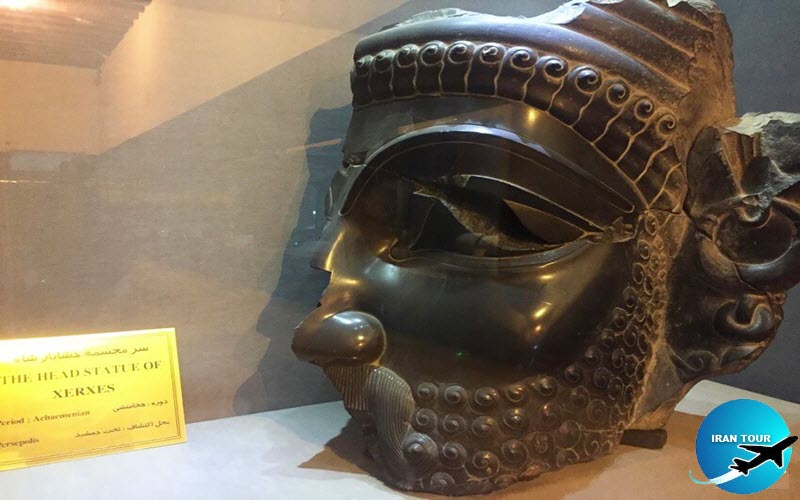Copyright 2020 - 2021 irantour.tours all right reserved
Designed by Behsazanhost
Persepolis The Museum
The Museum
The restored Museum building overlooks an open courtyard bordered by the Tripylon on the east, and the Treasury on the west. On the north, there were mud-brick barracks, possibly used as service areas. Built-in accordance with historical indications, the structure consists of a central hall supported by twelve columns, a north portico with eight columns, and several side vestibules and chambers. On both sides of the portico are what used to be small guardrooms, now occupied by the museum office and a souvenir shop.
 |
The building's walls were mud-brick, but the doorjambs and window ledges were made of stone. Doorjambs have been preserved and show the usual bas-reliefs: Xerxes attended by his personal servants, and the scenes of the king's combat with a rampant lion and a monster. The columns had round stone bases, while its wooden shafts and capitals were coated with a layer of painted plaster. The main hall had four windows on the north wall, four symmetrical niches in the south wall, and three niches each in the east and west walls.
 |
In the niches of the hall's south wall, several delicate line drawings have survived from the Sasanid age. The walls were probably covered with bands of polychrome tiles, like those still clinging to the walls of a gallery to the east of the museum entrance. The floor was covered with dark-red plaster. While the Museum largely retains its original design, the administrative section was modified to suit its modern purpose. It now comprises several fairly large rooms, instead of a series of small, very dark chambers arranged along both sides of a narrow passageway, as outlined in the initial plan. The Persepolis Museum may prove disappointing to those in search of a broad panoramic representation of Achaemenid art, mainly because its most valuable objects have been transferred to the National Museum in Tehran or to foreign collections. Still, the museum is worthy of a visit, if for no other reason than to see from the inside, the only completely-restored structure of the complex.
 |
The central hall houses artifacts from Persepolis and the surrounding region. On exhibit are a stone plate with Xerxes's inscription, clay tablets, stone column bases and capitals, alabaster trays and vessels, seals, pendants, and some gold jewelry, a stone sculpture of a mastiff, and a stone sculpture of a a human face.
In the section to the right are displays of cuneiform inscriptions, bronze instruments and statuettes, metal fittings used in the cartwheels, bronze trumpets, horse bridles, spear points, door handles, and nails, a model of the figure found in the Gateway of Pasargadae, and the Pahlavi inscription transferred here from Sar Mashhad. The section to the left presents glazed tiles, sword hilts, statuettes in stone and lapis-lazuli, earthenware, pots of metal and clay, terracotta pipes used for the sewage system, and singed remnants of cloth.
- Details
- Category: Museums of Shiraz








